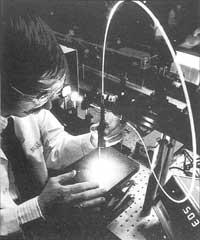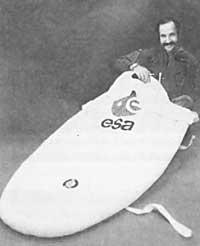Renal stones
1988/08/01 Elhuyar Zientzia Iturria: Elhuyar aldizkaria
Renal stones can now be treated in two forms. The first and oldest is the court of the sick. The second most recent uses shock waves. This treatment is performed using an instrument called litotriptore.

The treatment of shock waves is not satisfactory, but it is more sustainable than the operation. The litter tripter, however, has limitations: if the stone is too small, or if it is not too hard or has other components outside of calcium, it is not effective.
In the Massachusetts General Hospital, located in Boston (USA), a new laser removal pathway is being studied.
Different types of lasers are used depending on the structure of the stone. The laser is carried to the area of the stone by means of an optical fiber. The fiber goes in a flexible tube. The ureteroscope is like the endoscope used in the stomach. Three fibres will be used: one for the observation of the stone, another as a light source and another for the transport of the laser. Once the tube, urethra, gallbladder and ureteral sphincter has passed, it enters the ureter and is ready to work.
Through the laser the stones are made very small and can be expelled by the patient.

Gai honi buruzko eduki gehiago
Elhuyarrek garatutako teknologia





